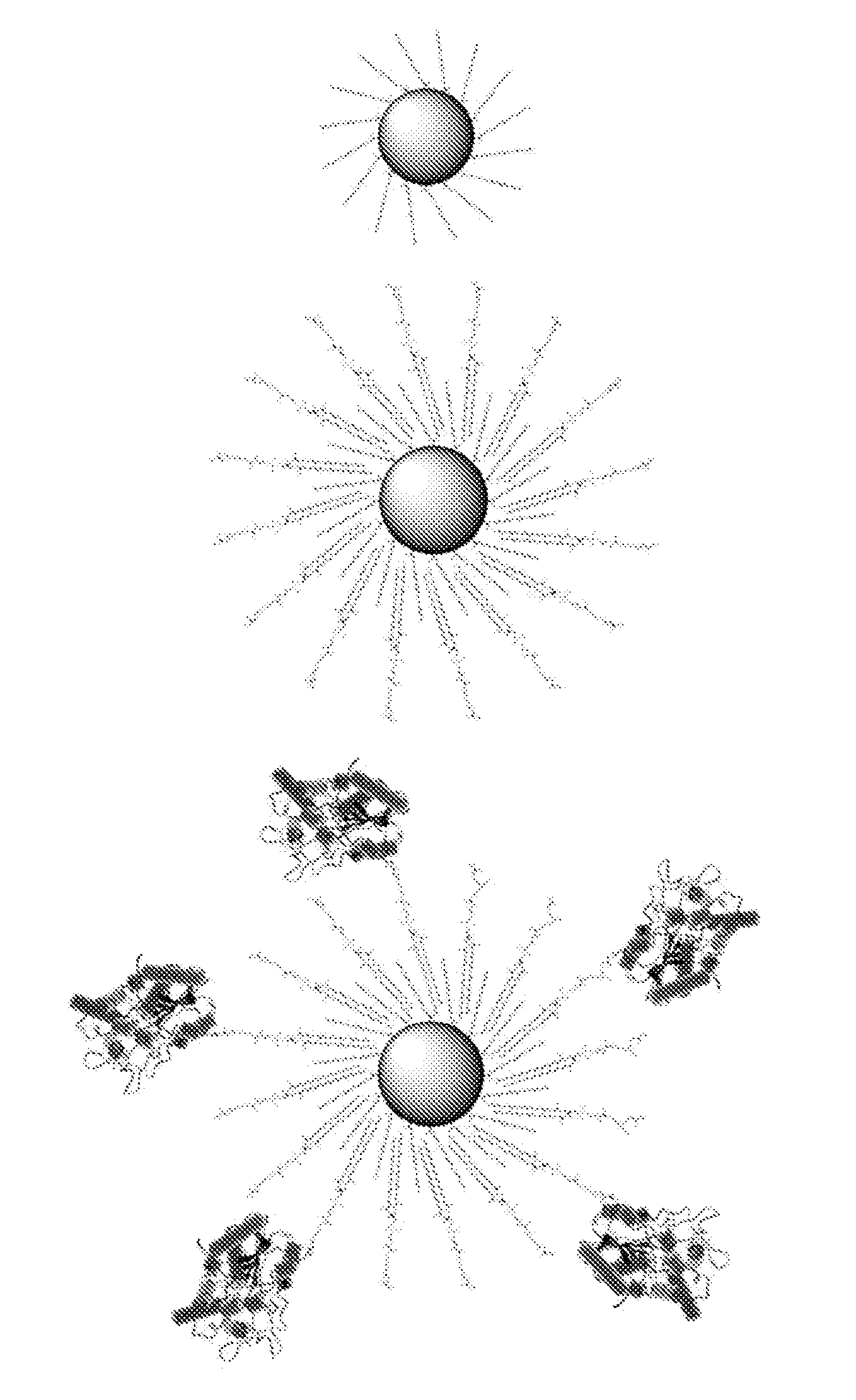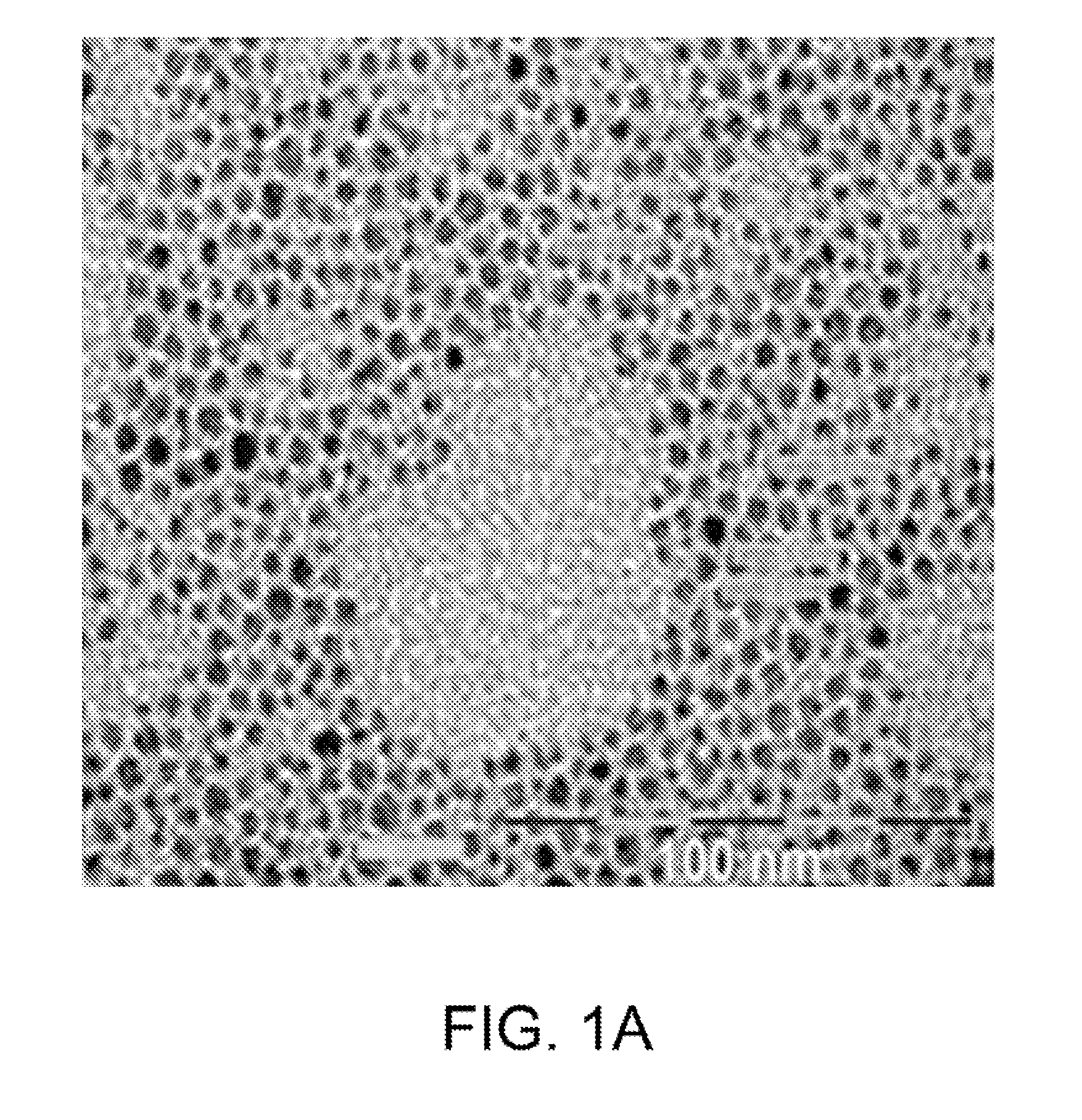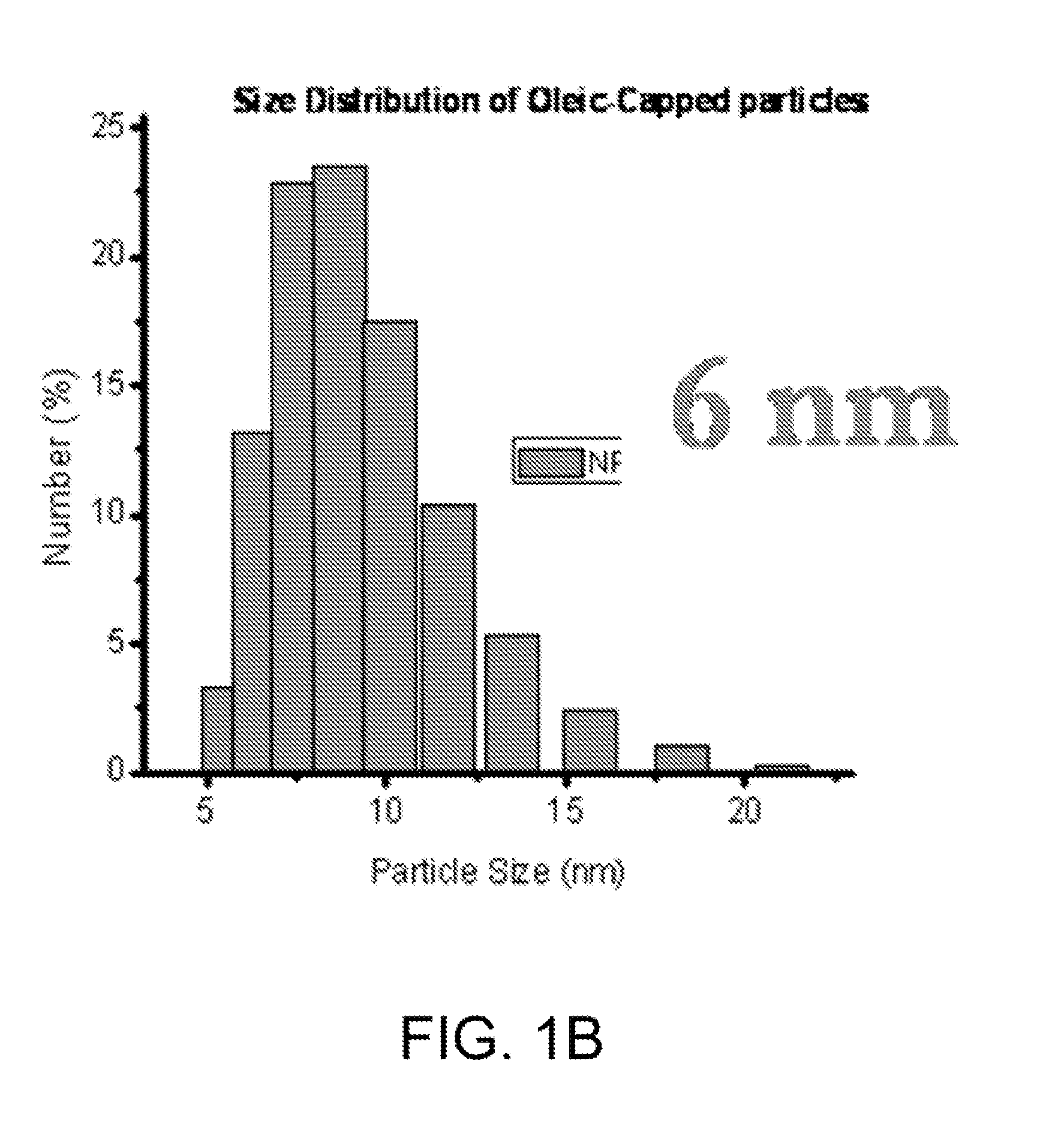Nanoparticle-mediated microwave treatment methods
a technology of nanoparticles and treatment methods, applied in the field of magnetic nanoparticles and nanoparticlemediated microwave treatment methods, can solve the problems of pulmonary embolism, bleeding, incontinence and impotence, and well-known surgical risks
- Summary
- Abstract
- Description
- Claims
- Application Information
AI Technical Summary
Benefits of technology
Problems solved by technology
Method used
Image
Examples
example 1
6.1 Example 1
Design, Synthesis and Characterization of Magnetic Nanoparticles Targeted to the Prostate
[0181]This section describes the design, synthesis and characterization of microwave-active magnetic nanoparticles that are targeted toward a prostate antigen.
The major parameters that can be optimized are:
[0182]The size and composition of the nanoparticle and microwave-induced heating capacity.
[0183]The capping chemistry.
[0184]The functionalization to couple the antibody.
[0185]6.1.1 Nanoparticle Synthesis
[0186]Rational syntheses are carried out to build a library of nanomaterials that can strongly absorb microwave radiation. A series of metal-doped magnetism-engineered iron oxide (MEIO) nanoparticles of spinet MFe2O4 where M is +2 cation of Mn, Fe, Co or Ni (Lee, J. H. Y M; Jun, J W; Jang, J T; Cheon, J, Artificially engineered magnetic nanoparticles for ultra-sensitive molecular imaging; Nature medicine. Nature Medicine, 2007. 13(1): p. 95-99) are investigated.
[0187]Particles are ...
example 2
6.2 Example 2
Nanoparticle Functionalization to Make Functional Nanoparticles
[0197]The carboxy-terminated functionalized nanoparticles resulting from the phospholipid functionalization described above can be further modified by covalently attaching J591 antibody. In both cases, the carboxyl groups on the nanoparticles are converted to primary-amine-reactive NHS-esters using EDC (1-ethyl-3-[3-dimethylaminopropyl]carbodiimide hydrochloride), and sun-NHS (N-Hydroxysulfosuccinimide) (Pierce Biotechnology, Rockford, Ill. USA) following the manufactures protocols.
[0198]Next, J591 at 10-fold concentrations Over nanoparticle concentrations is added to the NHS-ester-modified particles suspended in phosphate buffered saline. The mixture is allowed to react for 2 hours during which time the NHS-esters will react with primary amines on the proteins forming a stable amide bond. Excess, unconjugated protein is then separated from the nanoparticle-conjugates through size exclusion chromatography us...
example 3
[0200]In vitro studies can be conducted on prostate epithelial cells in order to assess the targeting capability of the nanoparticle conjugates as well as nanoparticle-directed polymer formation. For these experiments, functionalized nanoparticles are stained with the hydrophobic fluorescent dye acridine orange which loads in the hydrophobic region of the phospholipids that encapsulate the nanoparticles and allows for observation of nanoparticle aggregates through fluorescence confocal microscopy,
[0201]PSMA expressing, immortalized benign prostate hyperplasia endothelial cells (BPH-1, German Collection of Microorganisms and Cell Cultures, Braunschweig, Germany) and PSMA non-expressing prostate endothelial carcinoma cells (PC-3, American Type Culture Collection, Rockville, Md., USA) are cultured in 75 cm2 ‘T-flasks’ in their respective media according to the manufacturers protocols. The cells are then sub-cultured during mid-log-phase growth; 5000 cells i...
PUM
| Property | Measurement | Unit |
|---|---|---|
| Temperature | aaaaa | aaaaa |
| Diameter | aaaaa | aaaaa |
| Frequency | aaaaa | aaaaa |
Abstract
Description
Claims
Application Information
 Login to View More
Login to View More - R&D
- Intellectual Property
- Life Sciences
- Materials
- Tech Scout
- Unparalleled Data Quality
- Higher Quality Content
- 60% Fewer Hallucinations
Browse by: Latest US Patents, China's latest patents, Technical Efficacy Thesaurus, Application Domain, Technology Topic, Popular Technical Reports.
© 2025 PatSnap. All rights reserved.Legal|Privacy policy|Modern Slavery Act Transparency Statement|Sitemap|About US| Contact US: help@patsnap.com



